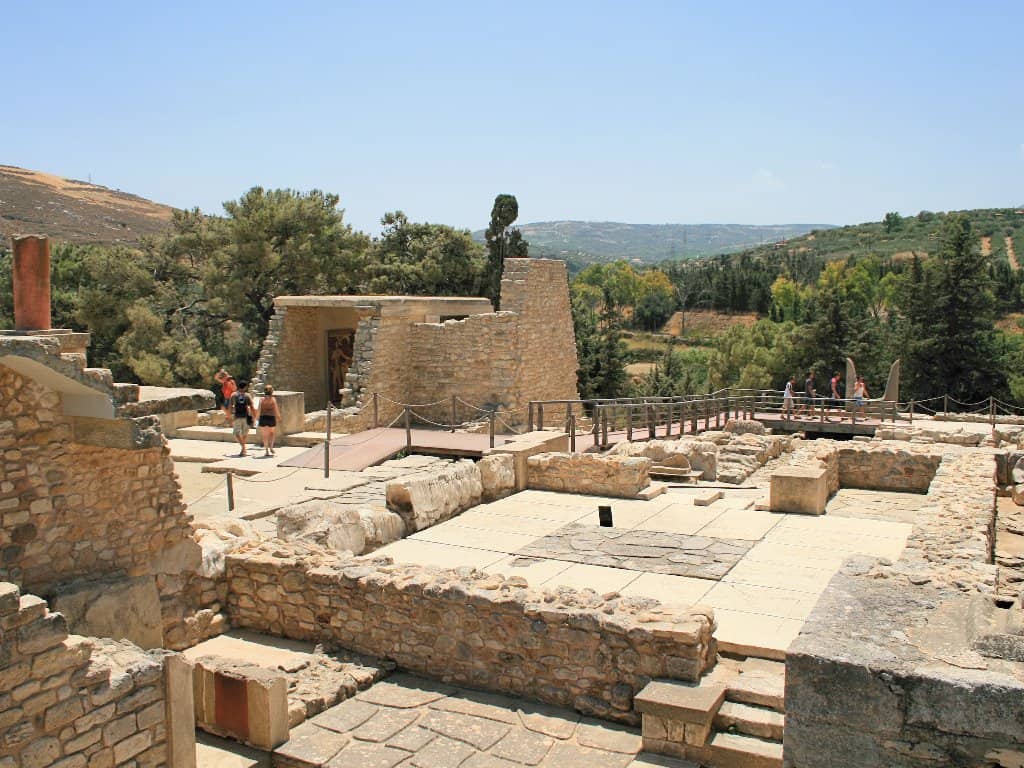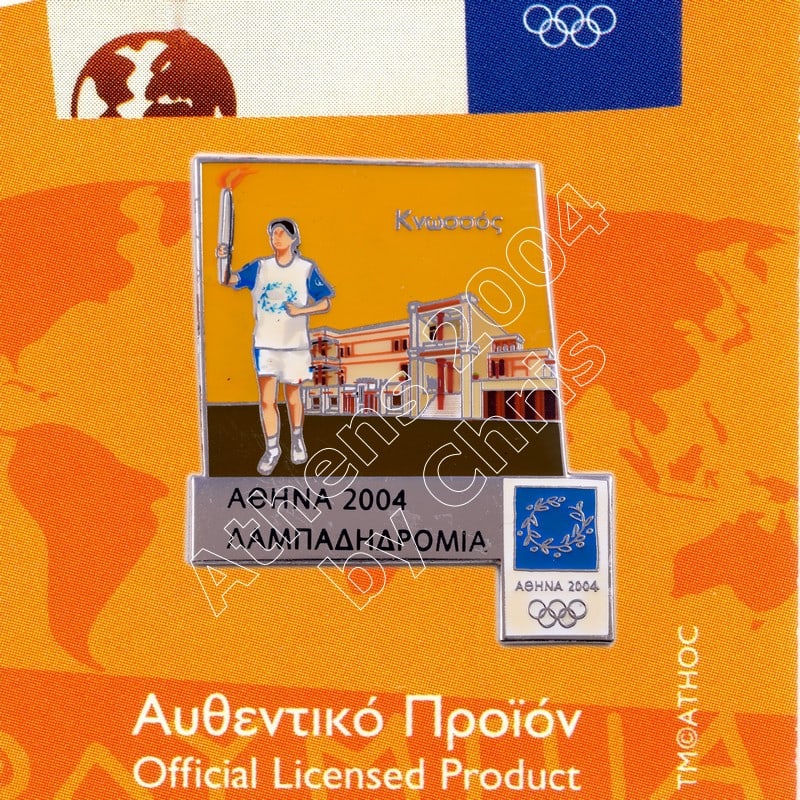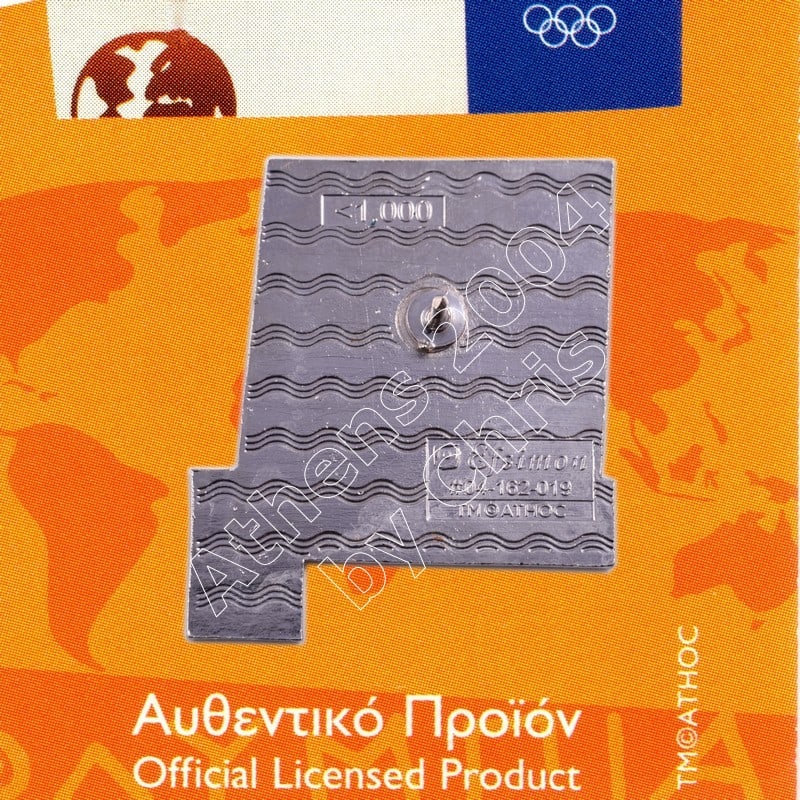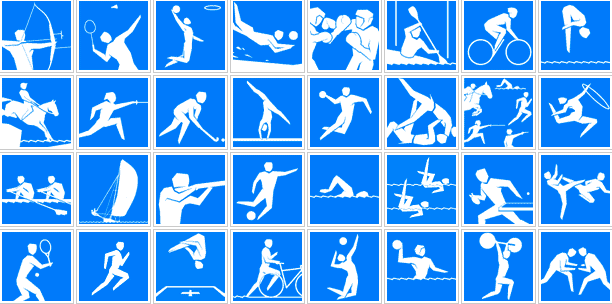Description
Knossos – Torch Relay Greek Route
Athens 2004 Olympic Games Pin
The Olympic Flame past from Greek City Knossos,
The 2004 Summer Olympics Torch Relay took the Olympic Flame across every habitable continent, returning to Athens, Greece. Every citywhich had hosted the Summer Olympics was revisited by the torch, as well as several other cities chosen for their international importance.
The relay was the first time the Olympic flame had travelled to Africa, India and South America. The flame was transported from country to country aboard a specially-equipped Boeing 747 leased from Atlanta Icelandic (Registration TF-ARO) called Zeus. On board the flame was carried and burned continuously in specially modified miners lamps.
Knossos or Cnossos is the largest Bronze Age archaeological site on Crete and is considered Europe’s oldest city.
The name Knossos survives from ancient Greek references to the major city of Crete. The identification of Knossos with the Bronze Age site is supported by tradition and by the Roman coins that were scattered over the fields surrounding the pre-excavation site, then a large mound named Kephala Hill, elevation 85 m (279 ft) from current sea level. Many of them were inscribed with Knosion or Knos on the obverse and an image of a Minotaur or Labyrinth on the reverse, both symbols deriving from the myth of King Minos, supposed to have reigned from Knossos. The coins came from the Roman settlement of Colonia Julia Nobilis Cnossus, a Roman colony placed just to the north of, and politically including, Kephala. The Romans believed they had colonized Knossos. After excavation, the discovery of the Linear B tablets, and the decipherment of Linear B by Michael Ventris, the identification was confirmed by the reference to an administrative center, ko-no-so, Mycenaean Greek Knosos in Linear B, undoubtedly the palace complex. The palace was built over a Neolithic town. During the Bronze Age, the town surrounded the hill on which the palace was built.
The site was discovered in 1878 by Minos Kalokairinos (Μίνως Καλοκαιρινός). The excavations in Knossos began in AD 1900 by the English archaeologist Sir Arthur Evans (1851–1941) and his team, and they continued for 35 years. The palace was excavated and partially restored under the direction of Arthur Evans in the earliest years of the 20th century. Its size far exceeded his original expectations, as did the discovery of two ancient scripts, which he termed Linear A and Linear B, to distinguish their writing from the pictographs also present. From the layering of the palace Evans developed de novo an archaeological concept of the civilization that used it, which he called Minoan, following the pre-existing custom of labelling all objects from the location Minoan.
The pin depicts the Torchbearer passing from a monument of Knossos city
Product: Olympic Pin
Pin code: #04-162-019
Tiraz: <1.000pcs
Official Licensed Product
Licensed Manufacturer: Efsimon Collection







Reviews
There are no reviews yet.